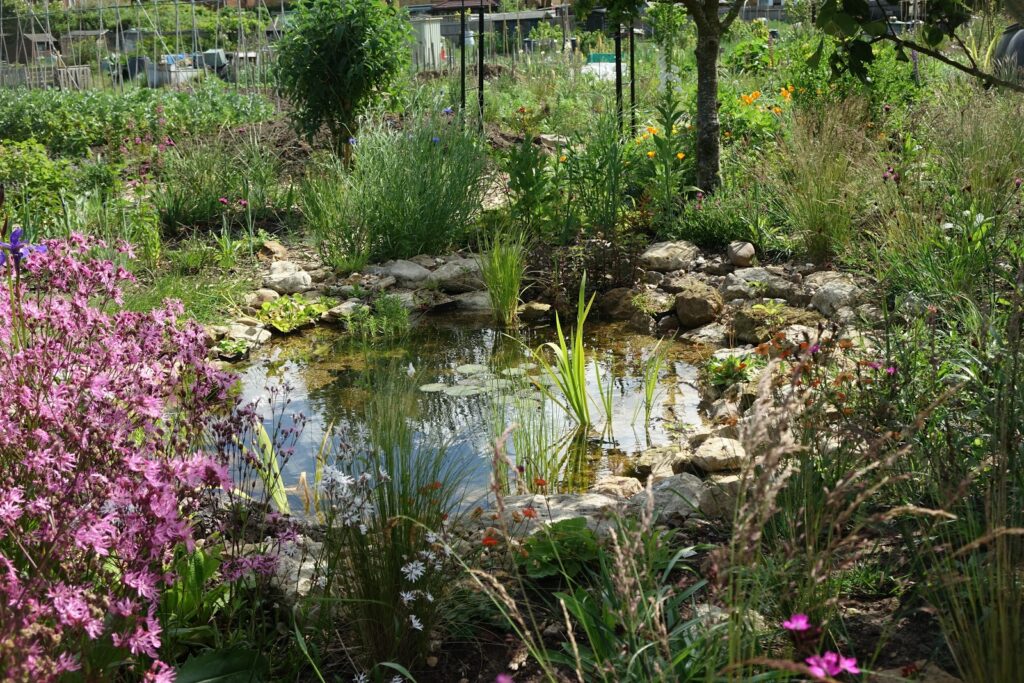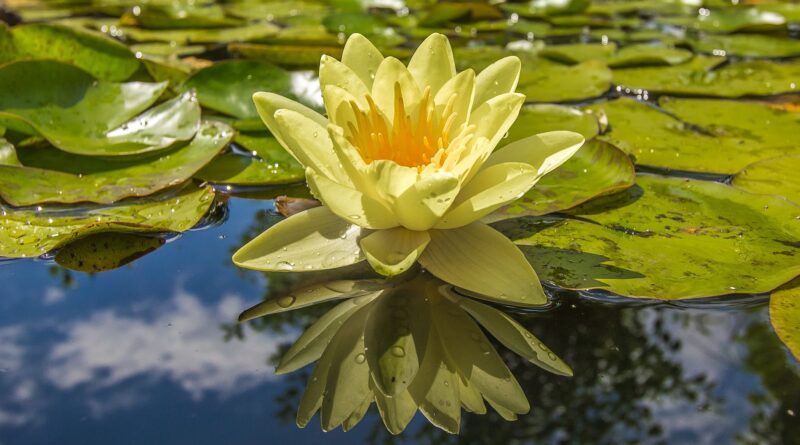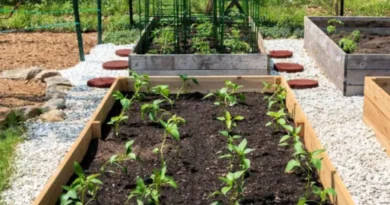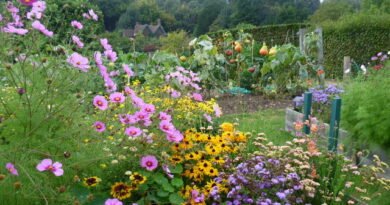Transforming Your Allotment: The Evolution from Tranquillity to Biodiversity with a Pond
Are you keen to enhance the visual charm and ecological equilibrium of your beloved allotment? If so, there’s no need to search further than the captivating allure of introducing an allotment pond into your garden landscape. Bringing a pond into your allotment is not solely about elevating its aesthetics; it’s an opportunity to craft a haven of peace and tranquillity, a sanctuary where the rhythms of nature can be observed and savoured.
An allotment pond is a multi-faceted addition that extends beyond its surface, offering a valuable sanctuary for aquatic flora and fauna, creating a microcosm of life teeming with biodiversity. The advantages it brings to your garden are abundant, spanning from water conservation to the welfare of local wildlife. In this extensive guide, we will escort you on a journey to unveil the myriad benefits of integrating an allotment pond into your gardening haven.
We’ll delve into the significant advantages, including the crucial conservation of water resources, which holds increasing importance in today’s ecological context. The pond operates as a reservoir, enabling you to recycle rainwater and preserve this precious resource while nurturing your garden’s soil health.
Moreover, an allotment pond emerges as a bustling hub for a variety of life forms, fostering biodiversity. Frogs, newts, dragonflies, and a multitude of aquatic insects are among the many inhabitants that find refuge within this water-rich ecosystem. The presence of such diverse species not only enriches the ecological tapestry of your garden but also sustains vital pollinators, establishing a harmonious, well-balanced environment that nurtures both plant and animal life.

As you contemplate the prospect of introducing an allotment pond to your garden, you’ll discover that the options are as diverse as the ecosystems they give rise to. Whether you are drawn to the natural charm of an unstructured wild pond or prefer the organised, elevated design of a formal pond, our guide will equip you with the knowledge and insights necessary to make an informed choice that aligns with your vision and the unique characteristics of your garden.
This journey into the realm of allotment ponds is about more than just enhancing the aesthetics of your garden; it’s an expedition into ecology, equilibrium, and the interconnectedness of all living entities. It’s an invitation to infuse a touch of the wilderness into your allotment and embrace the rewards that come with it. Whether you are a seasoned allotment gardener or a newcomer to the world of allotments, consider the allure of an allotment pond as an investment in the serenity, beauty, and ecological richness of your beloved garden. Your garden, along with the natural world it supports, will express its gratitude.
Benefits of an Allotment Pond:
- Aesthetic Appeal: A pond is a beautiful addition to any garden. It creates a sense of tranquillity and can serve as a focal point in your allotment. The sight and sound of water can be very calming and soothing.
- Ecosystem Support: Ponds can create a mini-ecosystem in your garden. They can provide a habitat for aquatic plants and animals like frogs, toads, dragonflies, and fish. They also help to attract beneficial insects like bees and butterflies, which can help pollinate your plants.
- Water Conservation: A pond can help conserve water in your garden by providing a source of water for your plants. Additionally, if you collect rainwater in your pond, you can use it to irrigate your garden during dry spells.
- Biodiversity: A pond can help increase biodiversity in your garden. By providing a habitat for aquatic plants and animals, you can attract a wider range of species to your allotment.

Types of Allotment Ponds:
- Natural Pond: This type of pond is designed to mimic a natural water feature. It has a sloping edge with different depths to provide a range of habitats for aquatic plants and animals. The water is usually filtered naturally through a gravel or sand bed.
- Wildlife Pond: A wildlife pond is designed to attract and support a range of wildlife species. It usually has a shallow edge to allow easy access for animals like frogs and toads. You can also add features like log piles and marginal plants to provide additional habitats for insects and other wildlife.
- Raised Pond: This type of pond is built above ground level, usually with a wooden or brick surround. A raised pond is a good option if you have limited space or want to keep your pond separate from your garden beds. They can be smaller in size and easier to maintain.
Maintenance of Allotment Ponds:
- Water Quality: It’s important to monitor the water quality of your pond regularly. You can do this by testing the pH levels and adding a water conditioner if necessary. Additionally, you can add aquatic plants to help filter the water and keep it clean.
- Algae Control: Algae can quickly overtake a pond, so it’s important to keep it under control. You can add barley straw to your pond, which helps to prevent the growth of algae. You can also manually remove algae with a net or use an algaecide if necessary.
- Plant Care: If you have aquatic plants in your pond, it’s important to maintain them properly. Remove dead leaves and stems regularly and trim them back if they become overgrown. This will help to keep your pond looking neat and tidy.
- Winter Care: During the winter months, it’s important to take extra care of your pond. If the pond is deep enough, it will not freeze over completely, which is important for the survival of aquatic animals like fish. However, you may need to remove any debris or fallen leaves from the surface of the water to prevent oxygen depletion.
Adding an allotment pond to your garden can bring a multitude of benefits, both aesthetically and ecologically. It can create a sense of calm and tranquility, provide a habitat for aquatic plants and animals, and help conserve water in your garden. Plus, it can increase biodiversity and create a more balanced ecosystem in your allotment.
When considering adding a pond to your allotment, you have a few options to choose from, including a natural pond, a pre-formed pond, or a raised pond. Whatever option you choose, make sure to do your research and plan carefully to ensure that your pond is a success.
So, what are you waiting for? Take the plunge and add an allotment pond to your garden today. You won’t regret it! And who knows, you might even discover a newfound passion for amphibians and aquatic plants. Happy gardening!




